Are you a beginner or advanced professional photographer? Or are you looking to get into photography? Maybe you’re simply a hobbyist with the sole desire of casual photography.
Regardless of your intentions, you’re going to need a lens, among other gear. This Canon lens roundup will assist you in finding a lens for your growing photography passion.
Do you need a lens that is affordable? Or do you want something more advanced and not as worried about price?
Depending on the genre of photography you’re interested in capturing, there are several options.
Canon 18-55mm f/3.5-5.6 kit lens
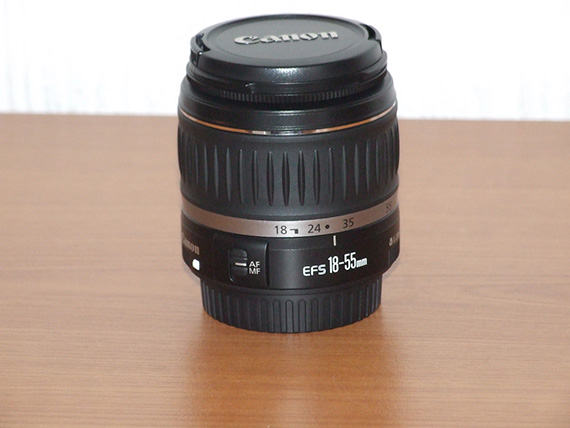
First of all, what is a kit lens?
Kit lenses come standard when you purchase your camera. They were specifically created to allow for more affordable camera bundles for consumers.
Here are some benefits of the 18-55 mm kit lens:
- The 55mm focal range allows for decent portrait photography. It allows you to highlight pertinent details of your subject and create a narrow depth of field.
- It is useful for taking excellent landscape photos due to its substantial wide-angle capability.
- Depending on the camera bundle, you may be lucky enough to receive a built-in image stabilizer that allows for lower shutter speeds with a tripod. This makes capturing in low light situations possible.
- It has a zoom feature where you can manually zoom in to a subject without having to move. The limitation, however, is that the lowest aperture is typically around f/3.5. This does not allow you to optimize in low lighting situations (depending on image stabilization and a tripod, as mentioned earlier).
- Only useful for crop sensor cameras such as the Canon t6i.
Due to its wide range of capability, from landscape to portraits, this lens is good to start out with to learn about photography.
Canon 75-300mm f/4-5.6 kit lens
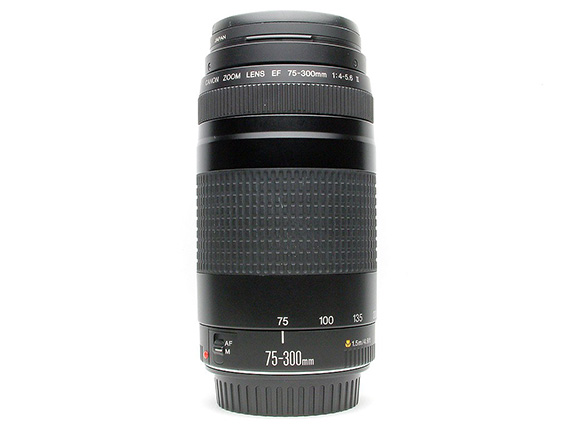
Unlike the 18-55mm lens, the 75-300mm lens is a telephoto lens – a lens capable of photographing images at long distances.
Are you trying to capture sports scenes are faraway landscapes like building architecture or mountains? You will find it difficult without a good telephoto zoom lens. That is where the 75-300mm kit lens comes in.
This lens allows you to capture subjects at 70 mm or far away at 300 mm. The only downside is that it is limited on aperture (f/4-5.6) and works best for crop sensor cameras such as the Canon 70D. Ideally, you would use a wider aperture to capture intense background blur, but the 70-300mm is more than capable of creating this without necessarily having a wider aperture.
Image stabilization is also an included benefit and allows shutter speeds up to three f-stops slower without any noticeable impact on image blur.
If you’re a beginner that needs an affordable telephoto lens, the Canon 70-300mm lens is a solid pick.
Canon 50mm f/1.8
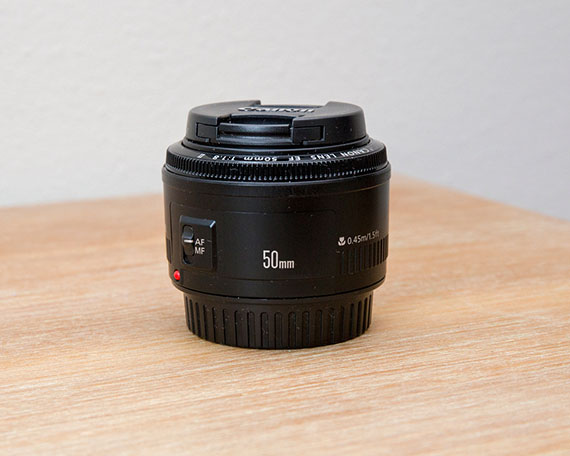
This is the first prime lens in our roundup. There is no zoom feature with a prime lens (it has a fixed focal length), therefore you will need to move around to get subjects closer up or farther away.
Having a flexible zoom lens allows for versatility.
Why do we need a lens that requires constant movement, then?
Here are a few reasons why you need a prime lens in your arsenal:
- Zoom lenses lose some sharpness over a prime lens. Consider the trade-off here when you want to maximize sharpness.
- Are you trying to photograph indoors or in low light? Zoom lenses have an aperture range of f/2.8-5.6 and make it more difficult to work indoors or low light situations.
- A great feature of the Canon 50mm f/1.8 lens is its fast aperture. Higher shutter speeds are possible which allows for shooting at the lowest ISO possible in low light. This especially useful indoors. You can also get a very nice bokeh because of the ability to utilize shallow depth of field around those tiny details to help your subject stand out.
The Canon 50mm f/1.8 is an excellent, affordable prime lens to have in your lens inventory.
Canon 85mm f/1.8
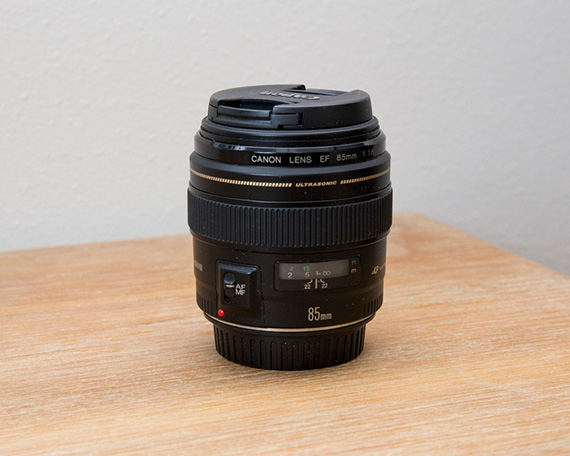
The Canon 85mm f/1.8 is an awesome lens.
Once again, this is a prime lens and has no zoom capability. It’s also a telephoto lens with a wide aperture, like the 50mm. You will need to adjust your position quite differently than the 50mm, however, due to the longer focal length.
The bokeh is exceptional on this lens. It’s more profound than the 50mm, partly because of the longer focal length.
Sharpness is superb on this lens. On a full-frame camera, you will see very minor losses at the edge of very large apertures. This is really only noticeable to a well-trained eye.
Like the 50mm, the 1.8 f stop allows capturing much easier in low light conditions. Portrait photos may be slightly more difficult, as capturing portraits at f/1.8 will be more challenging since the eyes will be harder to focus. Headshots and shoulder-up portraits are the great with an 85mm.
The 85mm is also lightweight and small which makes this easy to lug around with you on shoots where you have to travel greater distances.
Overall, the Canon 85mm f/1.8 lens is an affordable, superb lens. If you love using a prime lens, this is the one for you!
Canon 24-70 mm f/4 L series lens
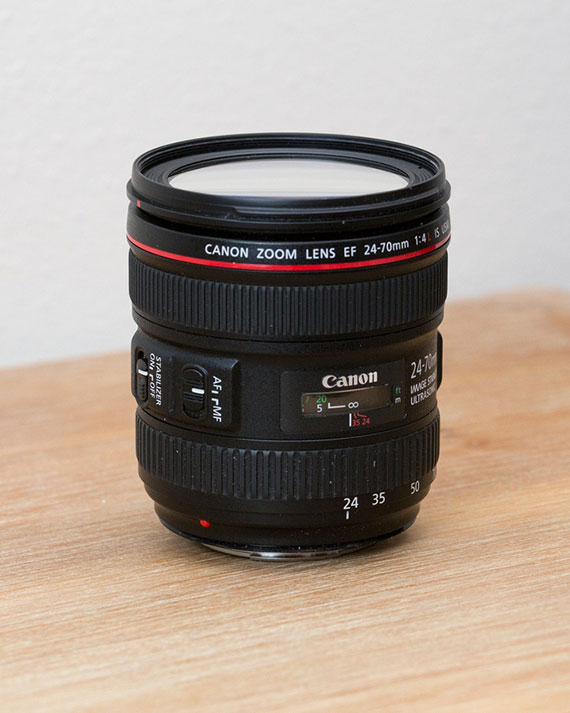
What is an L series lens?
The “L series” is Canon’s professional line of lenses. They have a red stripe at the end of the lens to signify this. These lenses all pair beautifully with full-frame cameras, such as the 6D, Canon Mark IV, or the 1DS.
This is the cheaper of the L series zoom lenses yet it still provides a beautifully clear image. The lens also has image stabilization that allows up to four shutter speed stops better to assist with low light conditions. Combine this with a tripod and you overcome much its inherent limitations.
This is a versatile lens. Because of its 24-70mm zoom capability, you can great wide-angle shots and close-ups without much compromise.
The aperture is limited to f/4, however. Because I primarily photograph families, this isn’t much of an issue as f/4 allows me to get the entire group in the picture without losing focus.
Lens flare and ghosting are minimized by a Super Spectra coating for greater contrast and color precision. Because of the L series designation, this lens is sealed against dirt, dust, and moisture for working in rough conditions. For example, as a beach photographer, a sealed lens is a must-have. Sand, wind, and water can easily damage a lens that isn’t protected.
Another cool feature of this lens is that it has a macro mode. This allows you to be within 4 to 6 inches from your subject in order to get tiny details. This is awesome knowing that you do not need to purchase a second lens to shoot in macro.
Annoyed by fingerprints? This lens protects from that, too!
It has a special coating that not only protects the lens but also assists in the ability to clean it.
You can’t go wrong with the Canon 24-70mm f/4 lens. Its versatility allows everything from a wide-angle landscape to highly-detailed close-up portraits. Personally, I love this lens and use it for pretty much everything.
The price is decent for an L series lens, but may be too much for a starting photographer. For those wanting to dive into the L series, this is an excellent lens to begin with.
Canon 70- 200mm IS USM f/4 (L series)
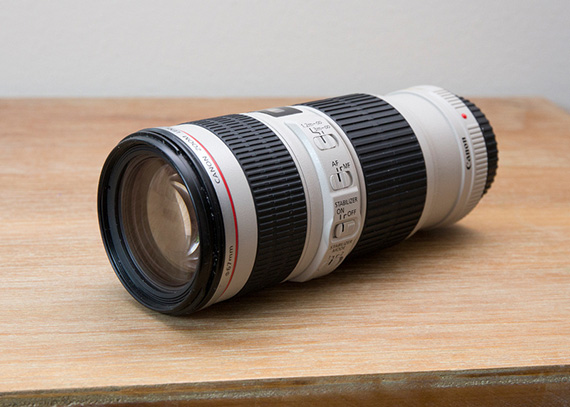
L series variant of the Canon 70-200mm IS USM f/4 lens
This is an awesome lens for portraits, weddings, and sports. It also has image stabilization and the ability to shoot with manual or autofocus. The autofocus is exceptionally quick – much faster than the 50mm and 85mm lenses. Also, the motor is so quiet you will practically never hear it. I would say this definitely helps with concentration!
This lens does a fantastic job of capturing from a distance. At a sporting event or a wedding, you aren’t always going to be able to get close. This lens allows you to be discreet and still get sharp, focused images from a considerable distance.
I have photographed several weddings with this lens and was never worried about my shots. The variable zoom is a lifesaver in situations where crowds prohibit your ability to move. If you are a wedding photographer, I can’t recommend this lens enough.
One thing to note, though. Because of the maximum f/4 aperture, there may be occasional motion blur on events with constant and fast movement, like a basketball game. Image stabilization and a tripod are your best bets here to minimize that. Ensure you turn off IS after any shutter speeds past 1/500. It won’t help. Raising your ISO will also help; just keep in mind the side effects of a higher ISO (grain/noise). The Canon 70-200mm f/2.8 will solve most of these problems but with a higher price tag.
The bokeh is really good for a zoom lens. The narrow depth of field is surprisingly crisp and the subject is super sharp. Heavy zooming barely affects the sharpness, though there is a tiny bit of flaring that occurs. Not bad for a zoom lens with a maximum aperture of f/4.
This lens is light. Don’t let its size fool you – you can lug this lens around anywhere and it is quite easy to hold.
It is a worthy purchase if you intend on turning photography into a career and will last a lifetime.
Canon L series 24-70mm non-IS f/2.8
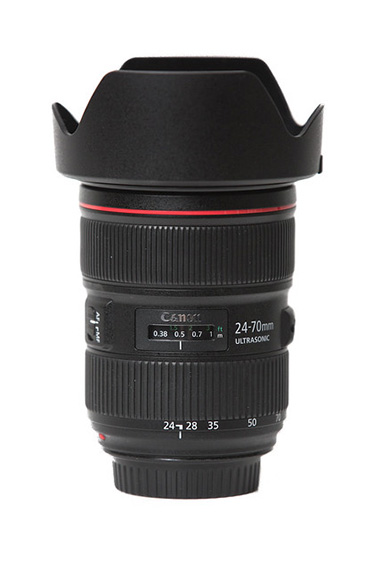
The quality and sharpness of this lens are impressive, which should be expected from any L series lens from Canon. I would say this is one of the sharpest zoom lenses that Canon makes. It doesn’t quite reach prime lens capability but it gets quite close. This lens is superior to the non-L series Canon 24-70mm f/4 lens.
A major difference between the f/4 and the f/2.8 is the aperture settings. This lens does much better in low lighting situations and provides a little bit clearer image. One thing to note about this lens though is that there is no image stabilization. This can be a downfall if you have super shaky hands, are capturing without a tripod, or are capturing fast-moving targets like birds or at sporting events. Image stabilization really helps in nearly every situation with low light and moving targets.
This is another great lens for wedding photography. In most cases, you can open the aperture up all the way unless you are taking large group photos. The variable zoom is seriously invaluable in events like weddings and sporting events where movement is limited. There have been times where I am getting some great distance shots of the couple walking around and then someone comes up to me and wants a picture! I don’t have to change lenses and I barely sacrifice any sharpness.
One of the most forgotten benefits of this lens is the surprising level of colors and contrast. The Canon L series 24-70mm f/2.8 rivals many prime lenses in this category.
Canon 70- 200mm IS USM f/2.8 (L series)
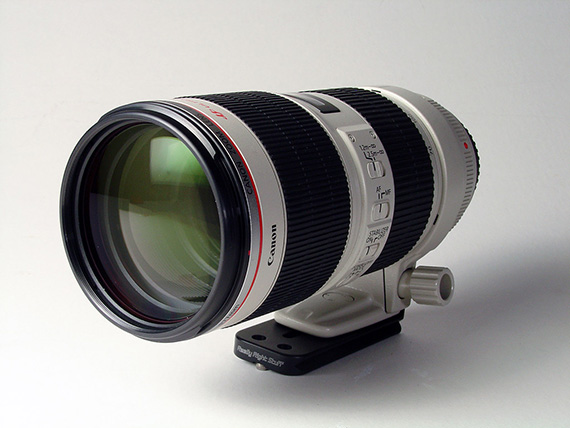
A relative of the Canon 70-200mm /f4, the Canon 70-200mm f/2.8 has an extra stop over the f/4. This allows for the ability to photograph in lower light situations and allow for higher shutter speeds due to the wider aperture.
This model also has image stabilization and works fantastic for fast-moving subjects, like at sporting events or with swift wildlife. If you are looking to take landscapes, the non-IS will be a better choice if you are looking to save money since image stabilization is hardly needed when using a tripod for that.
The lens isn’t weather-proof, so keep that in consideration when you use it. Always make sure you protect it from the elements!
It’s heavier than the f/4, so it may be cumbersome on long treks for landscape photography or during weddings where you can be on your feet for hours.
I hope this roundup of Canon lenses assists you in choosing your next lens. With as many lenses out there, it can be difficult to determine which one fits your shooting style and price range.
Already have one of these lenses? Interested in more information? Let us know in the comments!
About the Author:
Christi Pennington is a professional photographer in Destin, FL. She specializes in all things beach photography. Her passion for photography stems from her sister’s work in a busy portrait studio in Atlanta, GA. There, she learned the basics of photography on a Canon film SLR. She is also a wife and the mother of two wonderful children, who she spares no expense in photographing constantly.
Go to full article: Canon Lens Comparison
What are your thoughts on this article? Join the discussion on Facebook
PictureCorrect subscribers can also learn more today with our #1 bestseller: The Photography Tutorial eBook
The post Canon Lens Comparison appeared first on PictureCorrect.